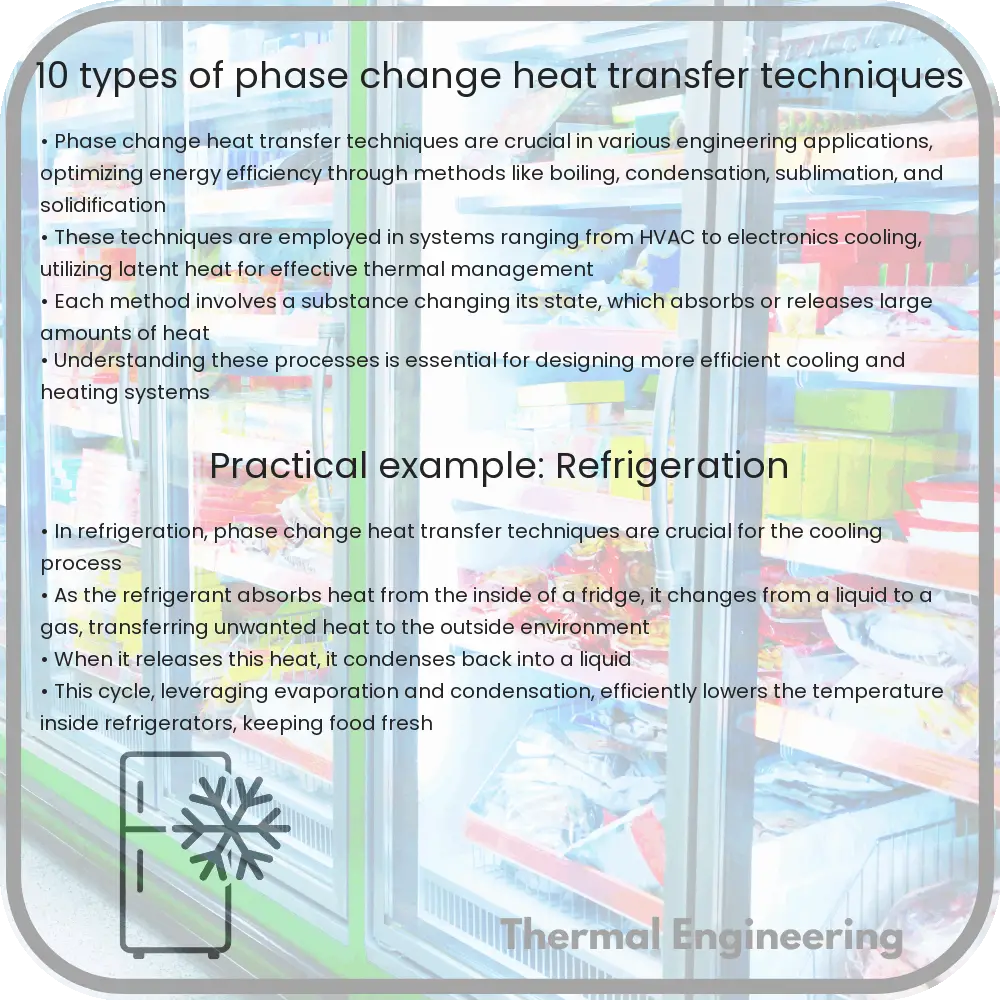Learn about 10 key phase change heat transfer techniques and their applications in engineering fields, from industrial manufacturing to HVAC systems.

10 Types of Phase Change Heat Transfer Techniques
Phase change heat transfer plays a pivotal role in various engineering processes, where heat is absorbed or released by a substance as it changes its phase. This mechanism is crucial in many applications, from industrial manufacturing to refrigeration and climate control systems. Here we explore ten common types of phase change heat transfer techniques, each serving distinct purposes across different engineering fields.
1. Boiling
Boiling occurs when a liquid becomes gas upon reaching its boiling point. In engineering, boiling is utilized to transfer large amounts of heat efficiently, for instance in steam generators and power plants.
2. Condensation
Condensation is the reverse process of boiling, where a vapor loses energy and converts back into a liquid. It is essential in technologies such as condensers in steam power plants, and in the HVAC systems where latent heat is important for humidity control and thermal management.
3. Melting
Melting involves a solid changing into a liquid after absorbing sufficient heat. This phase transition is exploited in metallurgical processes such as casting and soldering, enabling the shaping of metal components.
4. Solidification
Solidification, or freezing, is the process of a liquid turning into a solid. This technique is crucial in making alloys, freezing of biological samples, and in the production of ice in refrigeration systems.
5. Sublimation
Sublimation occurs when a solid transforms directly into a gas without passing through the liquid phase. This type of heat transfer is used in freeze-drying processes, which are essential in food preservation and pharmaceuticals.
6. Deposition
Deposition is the reverse process of sublimation, where a gas converts directly into a solid. Deposition techniques are significant in the manufacture of thin films and coatings in the semiconductor industry.
7. Evaporation
Evaporation involves the transformation of a liquid into vapor at temperatures below the boiling point. This process is fundamental in cooling technologies, such as in cooling towers and evaporative coolers used in HVAC systems and industrial processes.
8. Adsorption
Adsorption-based heat transfer involves the adhesion of atoms, ions, or molecules from a gas, liquid, or dissolved solid to a surface. This process is critical in refrigeration systems that operate with adsorbent materials like silica gel or zeolites to adsorb refrigerant vapors, generating a cooling effect.
9. Absorption
In absorption, one substance is taken into the bulk of another substance, typically a liquid absorbing a gas. Absorption chillers, for example, use this process to provide air conditioning with the aid of a thermochemical sorption process.
10. Desorption
Desorption is the reverse process of absorption and involves the release of an adsorbed substance from a surface. This heat transfer method is used in regeneration steps in chemical processes to recover adsorbed substances and regenerate adsorbents.
Understanding these ten types of phase change heat transfer techniques provides a comprehensive insight into the practical applications and essential operations in various fields of engineering. Each technique harnesses the unique properties of phase transitions to maximize efficiency in thermal management and energy conservation.